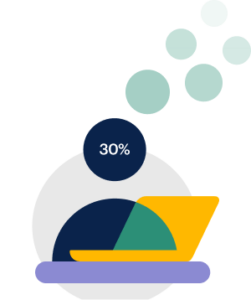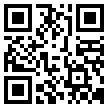أبريل 28, 2025
Why Behavior Change Requires More Than Knowledge Transfer

Imagine attending a workshop where you’re equipped with the latest conflict-resolution techniques. You leave feeling enlightened, ready to transform workplace disagreements into harmonious collaborations. But when the next conflict arises, old habits resurface, and the newfound knowledge fades into the background. This scenario underscores a critical insight: behavior change in the workplace demands more than just knowledge transfer.
The Knowledge-Behavior Gap: More Than Meets The Eye
Many believe that simply providing knowledge sparks behavior change, but the reality is far different. Without reinforcement, 70% of employees forget what they learn within 24 hours. This gap between learning and doing underscores the complex psychological and practical barriers that prevent new skills from turning into lasting habits.
Psychological Barriers: The Invisible Chains
Self-Efficacy: The Confidence Conundrum
Self-efficacy, or one’s belief in their ability to execute tasks, plays a pivotal role in behavior change. Employees with low self-efficacy may doubt their capacity to implement new skills, leading to avoidance or half-hearted attempts. Conversely, those with inflated self-efficacy might underestimate challenges, resulting in inadequate preparation. Striking a balance is crucial for fostering genuine confidence without tipping into overconfidence.
The Einstellung Effect: When Familiarity Breeds Rigidity
The Einstellung effect describes our tendency to rely on familiar solutions, even when better alternatives exist. In the workplace, this means employees might default to old habits despite new training, simply because those routines are ingrained. Recognizing and addressing this cognitive bias is essential for promoting القدرة على التكيف.
Fixed vs. Growth Mindset: The Belief Barrier
Carol Dweck’s research on implicit theories of intelligence distinguishes between fixed and growth mindsets. Employees with a fixed mindset view their abilities as static and may resist challenges that could lead to failure. In contrast, those with a growth mindset embrace challenges as opportunities to develop. Cultivating a growth-oriented culture encourages التعلم المستمر و resilience.

Practical Barriers: The Tangible Obstacles
Environmental Constraints: The Contextual Challenge
An employee’s environment significantly influences their ability to change behavior. For instance, a workplace that doesn’t support collaboration can hinder the application of team-building skills. Aligning the work environment with desired behaviors ensures that employees have the necessary tools and support.
Lack Of Reinforcement: The Fading Effect
Without ongoing reinforcement, new skills can quickly diminish. Regular follow-ups, تعليق sessions, and refresher courses are vital to solidify learning and encourage consistent application.
Overconfidence Bias: The Double-Edged Sword
Overconfidence bias leads individuals to overestimate their abilities, potentially causing them to overlook the need for further development or ignore constructive feedback. This bias can result in stagnation and resistance to adopting new behaviors. Recognizing and mitigating overconfidence is crucial for continuous growth.
Bridging The Gap: Strategies For Effective Behavior Change
Human-To-Human Coaching: Personalized Guidance
Expert-led coaching offers customized growth experiences, addressing individual challenges and fostering self-efficacy. This personalized approach ensures that employees receive real-time support tailored to their unique contexts, enhancing the likelihood of behavior change.
Creating A Supportive Environment: Cultivating The Right Culture
Encouraging a growth mindset within the organization promotes resilience and adaptability. By valuing effort and learning over innate ability, companies can motivate employees to embrace new skills and perspectives.
Continuous Reinforcement: Keeping The Momentum
Implementing regular check-ins, جلسات جماعية, and peer support groups reinforces new behaviors. This continuous reinforcement helps maintain momentum and prevents regression into old habits.
Beyond Knowledge Transfer
For HR professionals and organizational leaders, recognizing that knowledge transfer is merely the first step in behavior change is pivotal. By addressing both psychological and practical barriers, and investing in strategies like 24/7 expert-led coaching and supportive environments, organizations can transform knowledge into meaningful action, leading to improved performance and employee satisfaction.
Remember, it’s not just about knowing what to do—it’s about creating the conditions that empower employees to do it. Unlock the full potential of your workforce, discover how TaskHuman can help turn knowledge into action →
سوف نستمر في نشر المزيد. انضم إلى نشرتنا الشهرية!
الاشتراك في النشرة الإخبارية
ابق على اطلاع بأحدث موارد الموارد البشرية والأخبار والأحداث. إنه مجتمع يضم قادة الموارد البشرية ذوي التفكير المماثل الذين يتطلعون إلى تحويل الرفاهية العامة لشركتهم.






